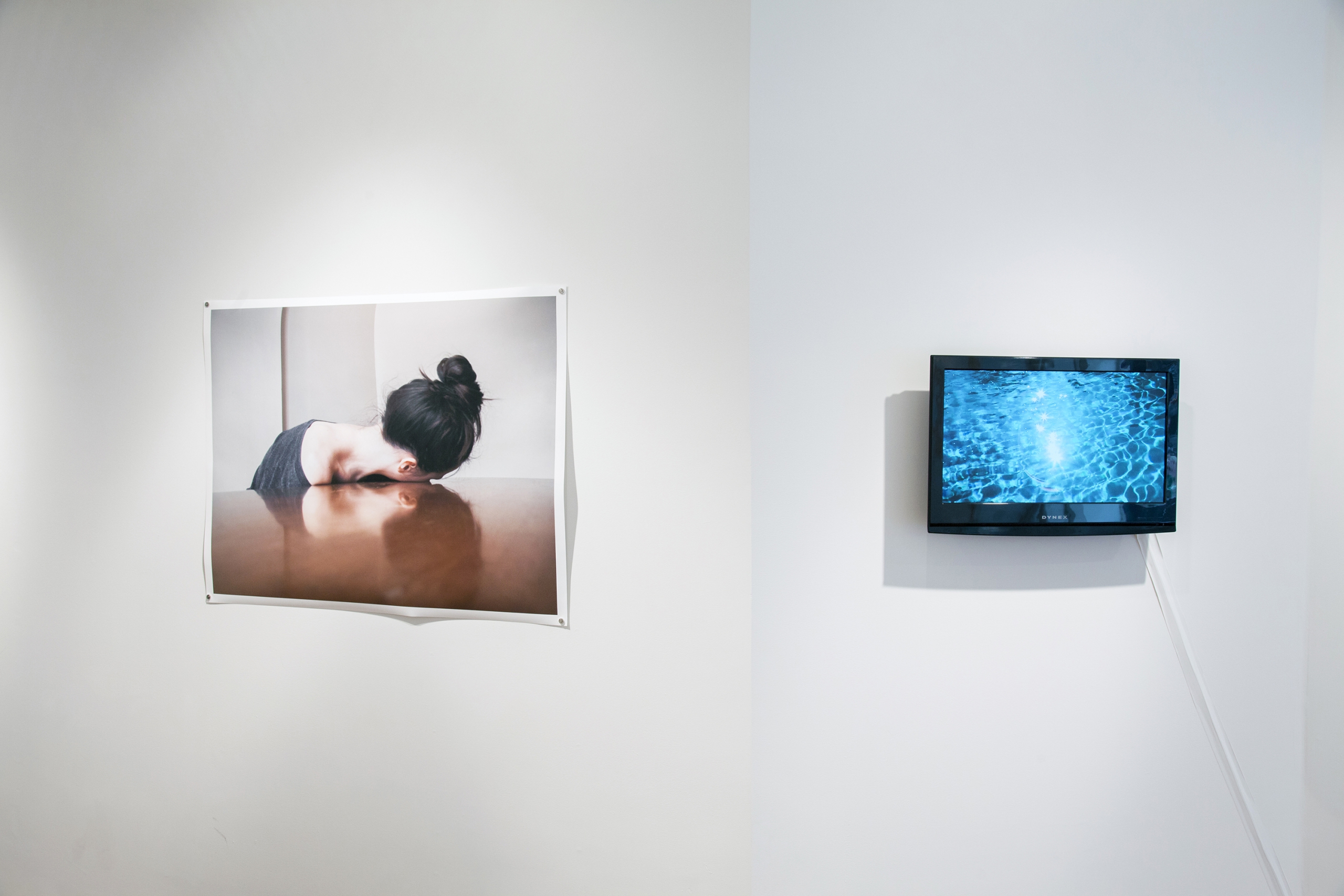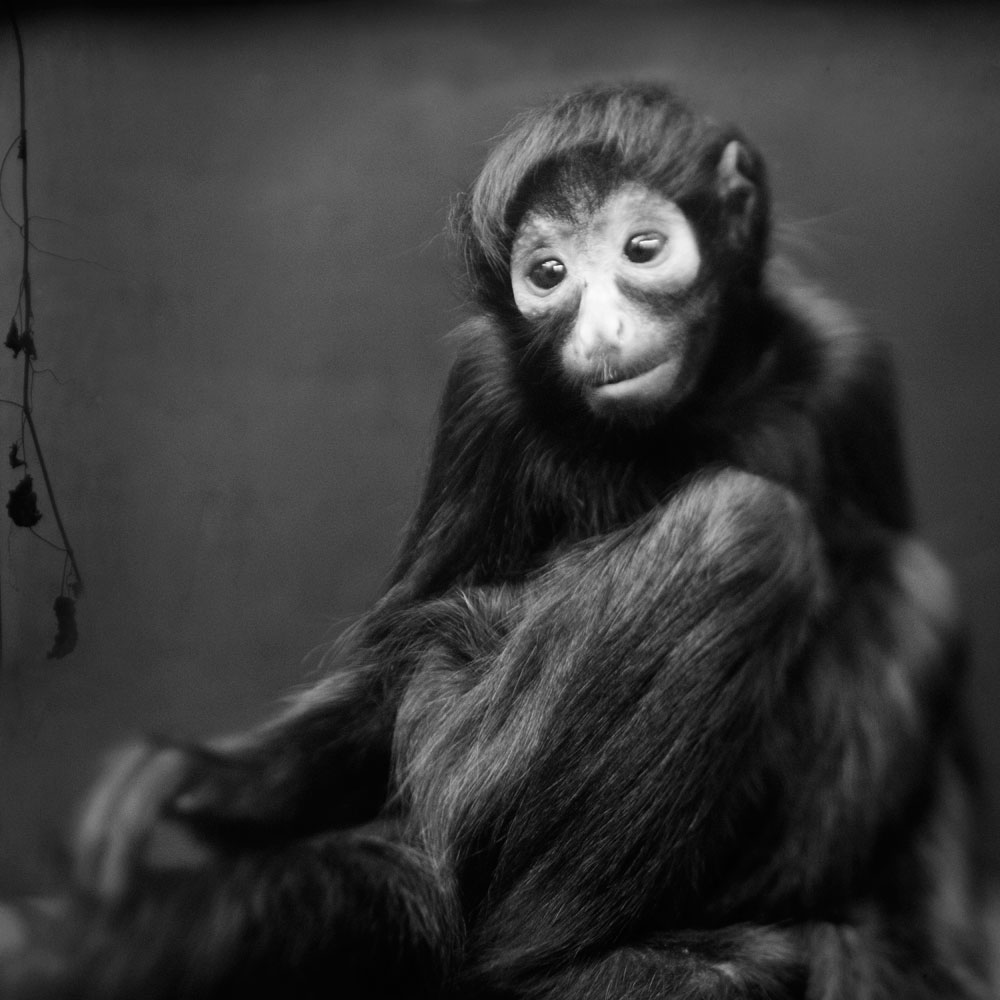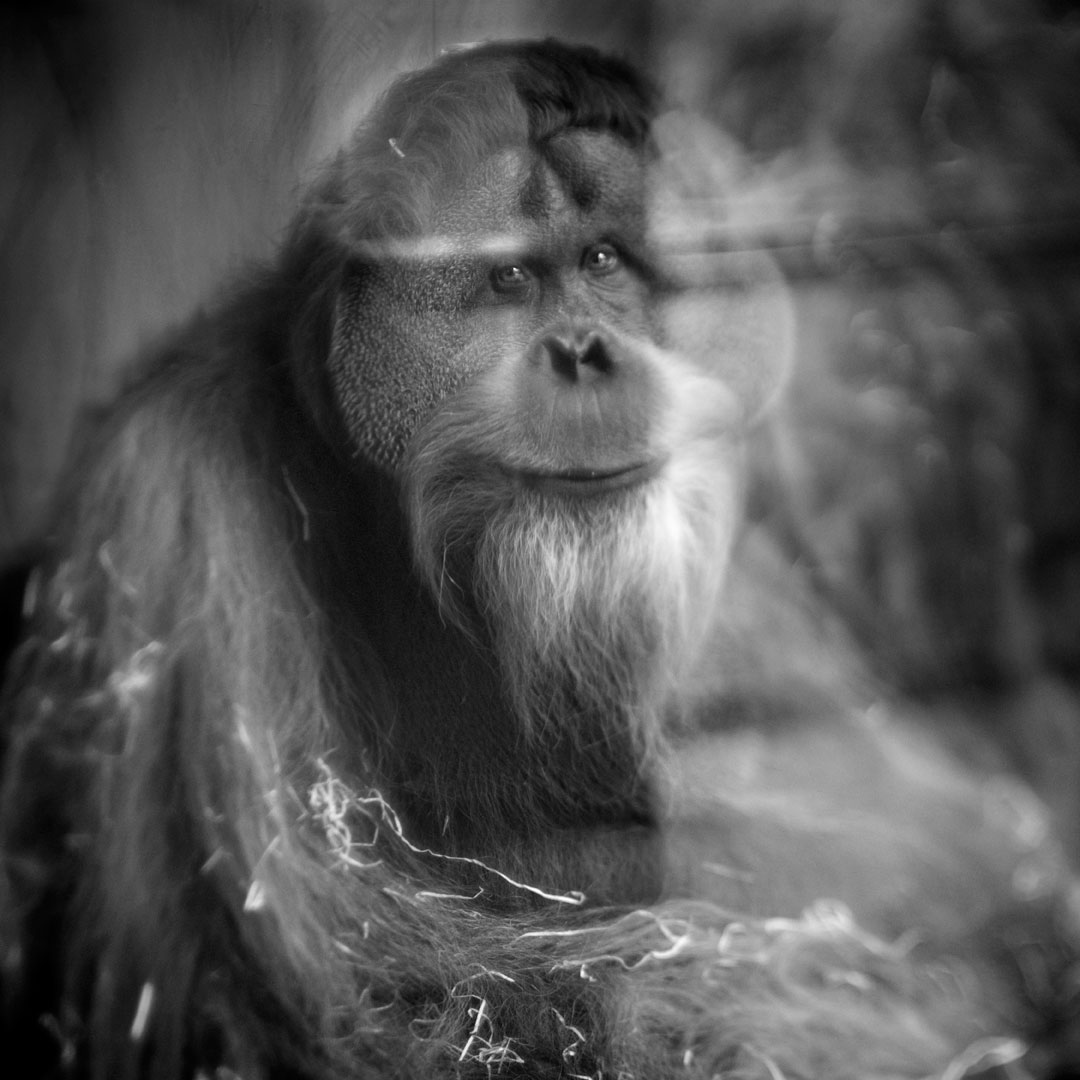And then the puzzle collapsed as I turned, hands out-stretched to show it. But the sensation was so odd as I saw it melt in slow-motion that I did not bemoan its fragmentation. I did not jerk and shift to prevent the demise of hours of work. I did not resent its desire to return to what it most essentially wanted to be despite my insistence - component parts, each a secret message, each an unfulfilled desire suddenly isolated and unable to make any sense. Bewitched, I watched the beauty of destruction, how the fragile frontiers came apart and created the third thing where the disappearance of the message is the new message that replaced it. Some pieces dropped to the floor, other clung limply to the side of my frozen hands. I closed my eyes and looked again, watched my mother's hands carefully picking up islands - she is suddenly a giant Goddess with red nails reaching from the heavens to reassemble Pangaea. She looks up at me, opens her mouth to speak, her lips break apart and then close again. I don't understand anything, my mind is blank.
In 2012, the gallery Venus Over Manhattan opened its doors with the inaugural show À rebours based on Joris-Karl Huysmans' 1884 novel of the same name that scandalized Paris at the time of its publication as it dethroned any other contenders as the supreme example of the French Decadent Movement (the story interestingly is about a misanthrope cum self-centered curator of everything). At the time I enjoyed they show very much for more reasons that I could name, not only because the physical space of the gallery with its unfinished drywalls and raw cement floors was in total opposition with its Upper East Side location, but the lighting, true to the story's protagonist's preferences, was kept at the extreme end of dim and the mix of works was nothing short of uncanny. Since I was not familiar with the story, some of the knowing winks to the novel were lost on me. What was not lost, however, was how wildly this kind of curating deviated from most of what was and is out there. Here was a way of putting the work of Glen Brown, David Hammons, and Francesca Woodman in the ring with Gustave Moreau, Odilon Redon, and Salvador Dali. Some pieces shone unexpectedly brightly in that darkness, while others faded into the blackness despite the clout of being auction house sweethearts. The overall effect was unanticipated dialogues between disparate works while the viewer mediated moving clumsily through patches of darkness in what seemed a very personal space, not quite a home, but definitely not a white cube. This exhibit was quirky like an individual can be quirky and I was jealous; I mean inspired. I realized that for me, the most interesting gallery experiences, in the sense of gratifying, have enigma and a certain uncanniness in equal measure behind the aegis of clear intentions. This was a good lesson to learn while still in the throes of the ICP-Bard MFA program.

I highlighted in neon yellow: "Such images are indeed able to usurp reality because a photograph is not only an image (as a painting is an image), an interpretation of the real; it is also a trace, something directly stenciled off the real, like a footprint or a death mask," in Susan Sontag's On Photography. Immediately I was struck by this notion of second-hand information provided by a photograph as a mere trace of our fundamental notions of what is real. I read that sentence over and over again, a stencil, a footprint, a death mask... and inferred a coded message that asserts an intention to deconstruct time and space in the hand of its user.
Naively I once thought that a photograph was a document, an objective rendering of the real made possible not as if by the interpretive hand of a painter, but by an unflinching machine bereft of ideology. Perhaps for a few moments in the history of visual culture the responsibility of those rare early images sent forth out into the wider world was to be reasonably representative. Those days are long behind us now with technology advancing so that we can each construct realities using image-making machines, creating false narratives, generating worm-holes that defer endlessly to vague notions of the real.
Sontag's mention of the trace led me to Jaques Derrida by way of literary theorist Martin Hägglund speaking at NYU's "Conditions of Possibility" lecture at The Graduate Center, CUNY where he mentioned the three traumas inflicted on human narcissism. Here my ears pricked up and I took note of the mysterious-sounding phrase. To learn more I began with narcissism, a term practically thread-bare in meaning from being tossed about for so long, but that in psychoanalysis is a complex mental condition where in the worst case scenario the sufferer makes no distinction between herself and external objects and in most cases is an excessive (read detrimental) self-absorption. The implication is almost casual, that as a collective consciousness humankind suffers from this self-centeredness.

The three traumas that Hägglund quoted Derrida quoting Sigmund Freud, were paradigm shifts that de-centered that collective sense of self, of who and what and even where we are. In summary, Freud's idea was that cosmological trauma happened when the Copernican subject no longer stood at the center of the universe; the biological trauma when the Darwinian subject no longer found herself at the apex of evolution; and the psychological trauma when the Freudian subject's unconscious revealed that we are not even masters of ourselves. For Derrida, Marxism not only completed the dismantling of anthropocentrism but asked if we can ever transcend it? Immediately I wondered what these "traumas" would look like as art "work"—to keep the Marxist spin on it —especially work at it's most personal level, as an instinctive artistic endeavor that is done outside the interest of financial gain. How do we, as image makers, still grapple with these wounding awakenings that have fragmented/traumatized us? How do they become externalized and representational? And so the curatorial instinct kicks in... Fast-forward, a proposal is written to the 130 year-old organization—The Camera Club of New York/Baxter Street, which is as excited about the possibilities of image-making today as it was at the dawn of the medium, and happily accepts my application to curate an exhibit based on The Three Traumas.
To curate is no different than to create, I say to myself. The "art world" mostly seems to prefer that you do one or the other. But it would be rare to find an artist, even a photographic one, who does not employ curatorial tactics in her work. After all, even within the spontaneous moment there is the decisiveness of when to capture it, excluding the moment before and after, selecting out a fragment from a whole. Curating, like most creative endeavors shuffles and re-assembles meaning.
In piecing together this puzzle called The Three Traumas as an exhibit, I chose one artist per trauma. Freud naturally seemed to bridge Copernicus and Darwin and in many ways was the easiest role to cast. I had been drawn to the casual intimacy of Teresa LoJacono's images since meeting her at ICP. There was always a two-sided aspect to her work, a confession and a concealment happening concomitantly. Her images seemed to pose as many questions as they answered, and they all felt very personal, not just when the camera was turned on herself. Palpable psychological content is how I defined for myself what I sensed in her images. Her work is the opposite of Nan Goldin's early confessional work—instead of extroverted effort there is restraint and even regret. "Have I said too much?" each image whispers to me. Part of the Freudian aspect to LoJacono's work for me is the sense that images are captured in the quiet solitude of the artist’s mind as much as in a camera. But either or both are inefficient. There is a quality of loss that is palpable—loss of youth, loss of loved ones, loss of connection to the broader world, a questioning of (her)self but simultaneously of the self’s undoing. This de-centered position from which LoJacono draws inspiration generates images that appear like scenes in a dream, documented with a degree of emotional detachment but retaining an element of regret. Her work is a bridge between a representation of her life and a comment on life in general at that particular place where there is slippage in meaning, during that imperceptible interval, during the infra-mince.

Stepping back... back in time and backing away from the work of R. Hardwick Weston to better see its totality, its pulsing mandala emanations. Weston was assigned the role of interpreting the Copernican revolution in collage. The result was a six-foot diameter pulsing mandala that, like a planet, appears to spin toward us from the blackest space while simultaneously eclipsing the sun whose aura we see along the outer edges. From halfway in the room the work feels spherical and even decorative. That is, until you start to see faces, and bodies, and buildings all erupting from the central idyllic scene of Ein Fawwar, the biblical spring in Palestine that once fed the "pleasure palace" of King Herod. In Hardwick Weston’s vision, it is a mythological spring that feeds the current chaos of the West Bank. The collage style that Weston employs is a labor-intensive accumulation of fragments (of his own photography) that are mirrored and cut and glued very precisely. The many layers of gestures by its totality of agglomeration submerges the viewer in a spiraling narrative that questions our capacity to fully comprehend the totality of any one thing while simultaneously placing her in a position of observing a celestial event. The work duplicates and replicates itself to grow within the restricted economy of belief, but ends up becoming an atmospheric experience of light in its own halo like the sun we once thought encircled us.


Darwin's theory of evolution ostensibly upended some religious origin myths and like the Copernican revolution, this de-centering of the biological subject was not easy to find representationally for this exhibit. I didn't know what I was looking for necessarily, but I knew it when I saw it. I came across Anne Berry's portraits of primates on LensCulture, and I instantly knew what she was getting at. I could see the gap of meaning she was leaving open where the subjective and the objective appear to mingle via a synapse of empathy. Though shown in surroundings that suggest restriction and captivity, the images of our Simian cousins do not suggest their plight as "other" but quite startlingly intimate a complex inner life similar to our own. With a range of expressions that begin with the glint of an intelligent soul behind the eyes, it is not too far a leap to empathize with what appears to be longing, curiosity, sadness, defiance, loneliness…even love. Here is a type of emotional evolution presented so masterfully that one falls into a narrative almost imperceptibly.
None of the three artists in this exhibit recapitulate ordinary experience, but instead they show us the dialectical opposition of their own processes: LoJacono's images that are visually simple but disorienting, Weston's collision of images and borders (both metaphorical and political) where the end-product is an actual gravitational pull of material presence and Berry's anthology of human emotion described on the faces of primates... Each artist demonstrates not a refusal to mourn our fall from grace, but an acceptance of our new position, composition, frisson—and now after the events, after the traumas, they manifest as art.




